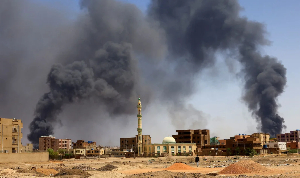Ghana’s budget deficit for 2008 was revised to 24.2 percent of gross domestic product after debts of 1.7 billion cedis ($1.16 million) were included, Finance Minister Kwabena Duffuor said.
The shortfall compares with an earlier estimate of 14.5 percent and comes after “arrears and commitments had been taken into account,” Duffuor told parliament in the capital, Accra, today.
Ghana is amassing debts before its starts producing about 120,000 barrels of oil a day next year. By 2014, the government expects to boost that more than fourfold. To help finance the fiscal deficit in the meantime, the International Monetary Fund agreed in July to lend the country $1 billion.
“The magnitude of the unexpected upward adjustment in the fiscal slippage is likely to be negatively perceived by international investors,” Samir Gadio, a market strategist at Renaissance Capital, said in an e-mail.
Ghana remains “on course” to achieve its budget targets, including a 2009 fiscal deficit of 9.4 percent of GDP, said Duffuor, who is a former governor of the central bank.
Duffuor was presenting parliament with a supplementary budget, including 252.8 million cedis in additional spending, following up on the full 2009 budget issued in March.
The deficit target for this year “may look increasingly optimistic,” Gadio said.
Inflation Target
The fiscal deficit for the first half of 2009 reached 4.5 percent of GDP, compared with 6.5 percent for the same period a year earlier, Duffuor said. The trade deficit narrowed to $955.8 million from $2.16 billion over the same period.
Ghana has increased its inflation target for this year to 14.5 percent, from 12.5 percent, Duffuor added.
The inflation rate in July reached an annual 20.5 percent, little changed on the five-year high of 20.7 percent set in June, according to data from the Ghana Statistical Service.
Ghana is Africa’s second-biggest cocoa producer behind neighboring Ivory Coast and the continent’s second-largest gold producer after South Africa.
Duffuor said Ghana will sign a $1.2 billion loan facility to finance purchases of cocoa from farmers during the 2009/10 harvest in September.
General News of Tuesday, 25 August 2009
Source: Bloomberg












